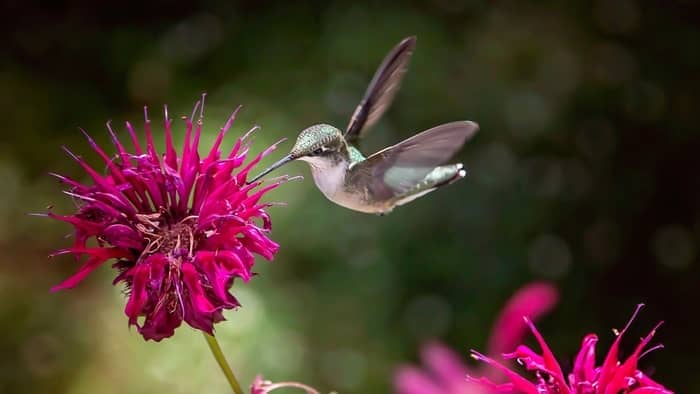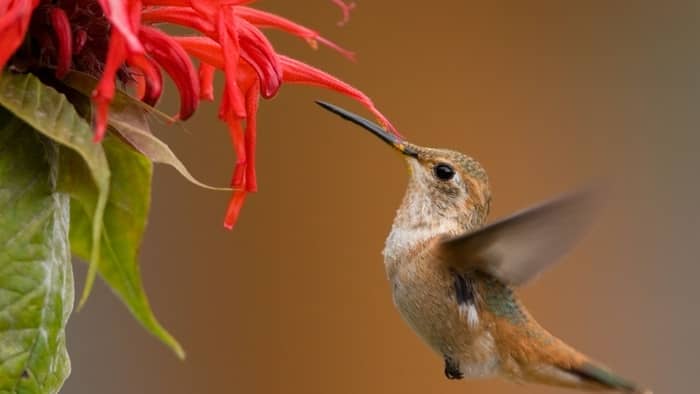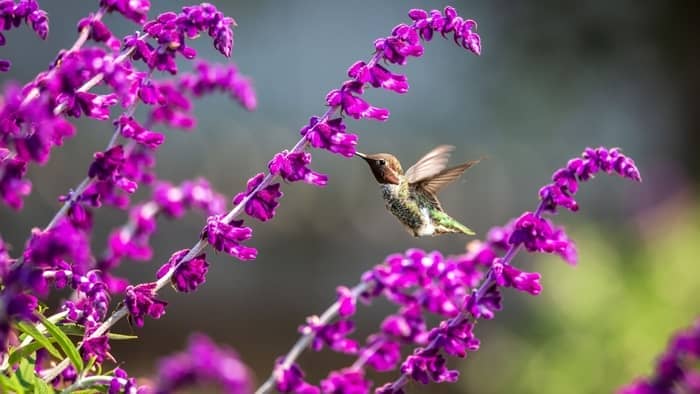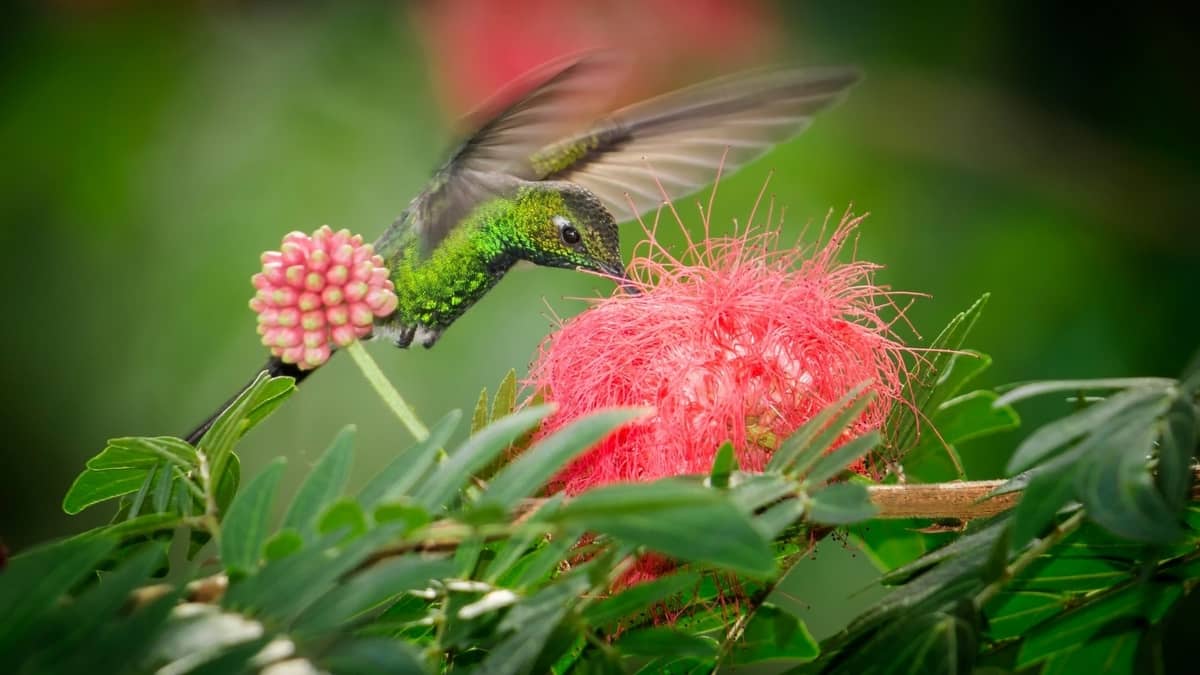Bees and other insects are popularly known to be pollinators. But do you know if hummingbirds also pollinate flowers? Certainly, they do!
Pollination is an essential process in the reproduction of plants as this ensures the continuation of the plant’s life cycle. Hummingbirds are as well capable of pollinating many different flowers.
Just as bees and other insects, hummingbirds help carry pollen grain from one plant to another. Also, in order to boost the chances of plant pollination, a lot of flowers have evolved and developed enticing physical attributes just to attract hummingbirds.
Therefore, hummingbirds do pollinate flowers and we will be looking at some facts about this and how pollination is done by these charming birds. So let’s get right into this.
Hummingbird Pollination Facts
Flowers need to pollinate so they can continue to reproduce. Pollination happens when pollen grains (which contain reproductive cells) are transferred between the male and female parts of a flower.

There are hundreds of thousands of flowers around the world including flowering shrubs and trees. And about 70 to 80 percent of these plants require the assistance of pollinators to initiate pollination. Wind and other factors can help with pollination. But other living things such as insects, birds, and mammals can as well initiate pollination for these plants.
Hummingbirds are just the right pollinators for flowers. This is mainly because they tend to visit multiple flowers between one thousand to three thousand times per day.
Hummingbirds need enough calories to fuel their high metabolic activities and nectar solution from flowers a well as hummingbird feeders will provide them the necessary energy requirements Therefore, as they move from flower to flower, they help carry pollen grains to many flowers that require reproduction.
Hummingbirds also eat small insects to obtain protein from them. However, a nectar solution from flowers and feeders is a major part of their diet.
So, we can see why hummingbirds are as well important when it comes to pollination.
How Do Hummingbirds Help Pollinate Flowers?
Hummingbirds will visit many flowers multiple times per day. Therefore, there is always a high chance of them collecting or dispersing pollen to other flowers to help with pollination.

Here are the different ways hummingbirds tend to pollinate flowers:
· Dispersion of pollens by movement
Hummingbirds are always involved with rapid movements such as flapping or hovering of wings, feeding multiple times, and so on. With these different rapid movements, hummingbirds can knock the pollen grain from a flower and initiate pollination.
This bird can as well jab or poke a single flower with its bill. Hummingbirds can as well flap their wings which will end up generating some breeze that is capable of dispersing pollen grains to the right place for pollination.
· Head transfer
Flowers that bloom heavily tend to have long stamen as well as tall anthers that contain pollens. As hummingbirds visit these flowers multiple times while feeding on them, hummingbirds can brush against the anther. Thereby, this may cause pollen grains to stick to the head of hummingbirds.
Hence, the pollen grains on the head of hummingbirds can be transferred to the next flower hummingbird visits.
· Body transfer
Also, hummingbirds are known to be very aggressive to other hummingbirds or even birds whenever they find a reliable food source. They can even fight other hummingbirds to have a food source all to themselves.
The process of fighting can as well cause hummingbirds to brush some pollen on their body and pass it on to other flowers to initiate pollination. The sticky substance of pollen grain also contributes to sticking and brushing off as they move.
· Bill transfer
Again because pollen grains are sticky, it tends to stick to the bills of hummingbirds as they drink nectar from different flowers. Therefore, pollen grains can be dispersed it transferred to other flowers as hummingbird visits them. Hence, this helps with the process of pollination.
How Do Flowers And Hummingbirds Benefit Each Other?
Flowers and hummingbirds simultaneously benefit from each other. Hummingbirds visits flowers multiple times in a day to obtain and sip sweet nectar.
At the same time, while hummingbirds visits these flowers multiple time, hummingbirds helps the flower carry or transfer pollen grains to the stigma of the required flower that needs to be pollinated.
Flowers Features That Attracts Hummingbirds To Pollinates Them

Many flowers have evolved or adapted just to attract different birds including hummingbirds to help pollinate them. Here are some features these flowers possess to attract these iridescent birds to them:
- Hummingbirds have the tendency of being attracted to bright colors such as red, orange, yellow, pink, and so on. Most of the blooms of these flowers are of these colors. Generally, birds can see a wider spectrum of colors better than humans and this includes ultraviolet colors.
- Just to make hummingbird’s visit to flowers more accommodating, these flowers position themselves in a way these birds can feed without any stress. It allows these birds to feed comfortably without their wings hitting or brushing against the leaves or stems.
- Some flowers tend to have long, tubular blooms, and this type of flower shape retains more nectar reservoirs. Also, a flower with the shape of a funnel gathers up or accumulates nectar at its bottom. This is perfect for hummingbirds because it prevents insects that are unpleasant to hummingbirds as well as other animals from causing any harm to the bloom.
- Some flowers have a pungent smell while other flowers little smell. Hummingbirds lack a strong sense of smell but insects tend to have a strong sense of smell. Therefore, the flowers that have a pungent smell mostly attract insects. Conversely, flowers with little smell are the ones hummingbirds mostly gravitate towards.
Read more about Do Hummingbirds Migrate On The Backs Of Geese: Know The Facts
Do Hummingbirds Pollinate Flowers: Final Say
Apart from bees and other insects, we know that pollinates flowers, birds such as hummingbirds are also part of pollinators.
Most of these flowers have evolved and they possess different features to help them attract these iridescent birds as well as other birds to them.
So, apart from attracting hummingbirds to your garden or yard to feed them, these birds can also be of great help with pollinating different plants in your garden. Therefore, you can enjoy the pollination result of fuller blooms and a lush garden.
So, we can see how hummingbirds do help the environment. We can also see how both flowers and hummingbirds do benefit from each other from their mutual relationships.

